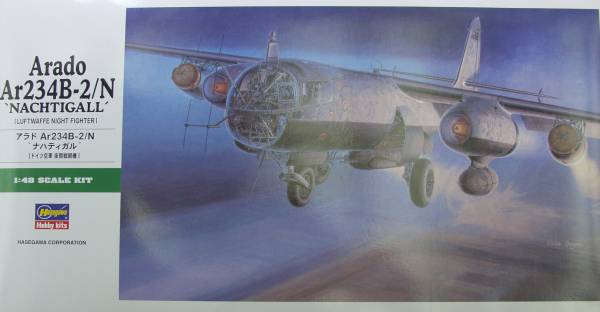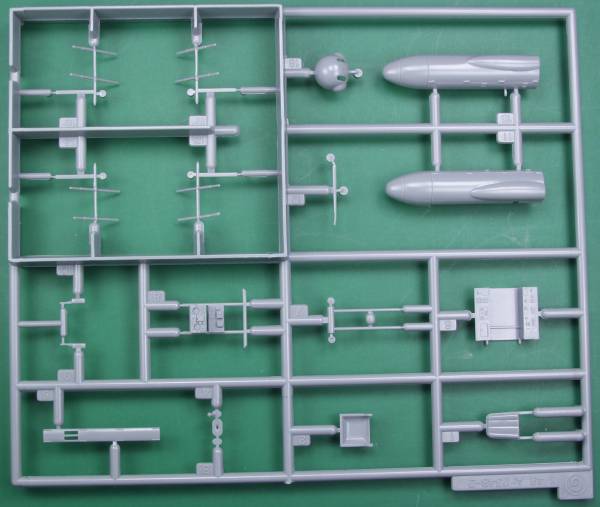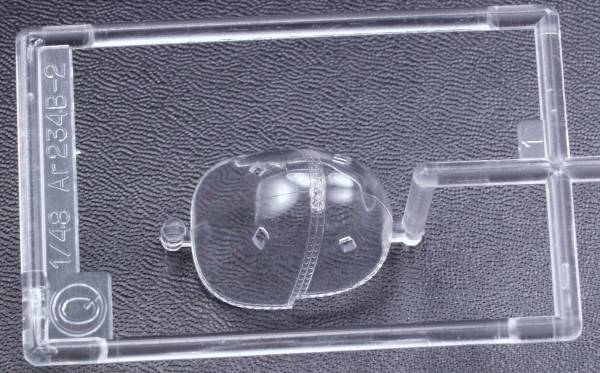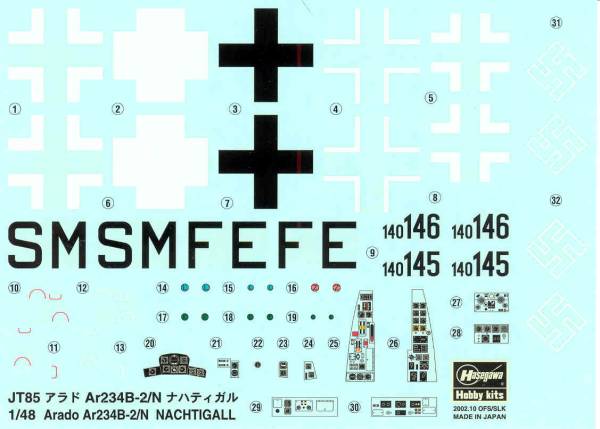

Ar 234B-2N
In 1944 the Ar-234B was flown to evaluate its suitability for instrument and night flying. The result of this evaluation was positive and the RLM recommended that the B2 variant be outfitted as a night fighter under the code name "Nachtigall" (Nightingale). The aircraft would carry a second crewman as a radar operator / navigator. He would be located in the aft section of the fuselage where the cameras were normally carried. A tub beneath the fuselage would house two fixed MG 151/20 guns. A modified version was evaluated by Oberleutnant Kurt Welter, one of the most successful night fighter pilots of all time, near the end of 1944. He felt that the aircraft would be unsuitable for night use due to reflections in the canopy glass at night and possibility of it being damaged by debris from the bomber being attacked. In March of 1945 a night fighter unit was formed under the command of Major Kurt Bonow. It began operations with two Ar 234B-2N's. They flew several successful missions and there were problems with canopy glare. Additional aircraft were delivered to the unit during the wars final days but there are no records or accounts of any of them downing any enemy aircraft.
The Kit

The Hasegawa kit is essentially identical to the kit for the Arado 234B and exhibits good fit and detail with a couple exceptions. The cockpit rear bulkhead is a little oversized and will cause problems closing the fuselage if not filed to fit ahead of time. The other issue deals with the alignment pins on the wings. If used these will cause issues with both the wing tips and fuselage join. The pins are best cut off and the wings aligned and glued together. All other comments that were made in the Ar 234B review apply to this kit as well. The primary changes were accomplished by adding one sprue which contains the seat and instruments for the radar operator, the radar antenna and mounts and the under fuselage gun pod. The clear nose piece was replaced with one having the holes for the radar antenna mounts. These are shown below.



The instructions are printed on a 10 1/4" x 28 1/2" page that is folded in quarters to provide eight panels. The first panel is history and specifications, the next three are assembly instructions, the next has a parts map and paint color list, the next two panels are painting and decal instructions and the last panel has the decal installation process and the usually safety warning.
After Market Goodies
While I'm not sure how appropriate they are I decided to add the Aires Wheel Bay set, the Cutting Edge cockpit, the Eduard photoetch kit and the Terry Dean nose weight as described in the Ar 234B review located here.
Links to kit build or reviews
Kit builds or reviews can be found here.
References
"The First Jet Aircraft" by Wolfgang Wagner
Last updated 5/10/08